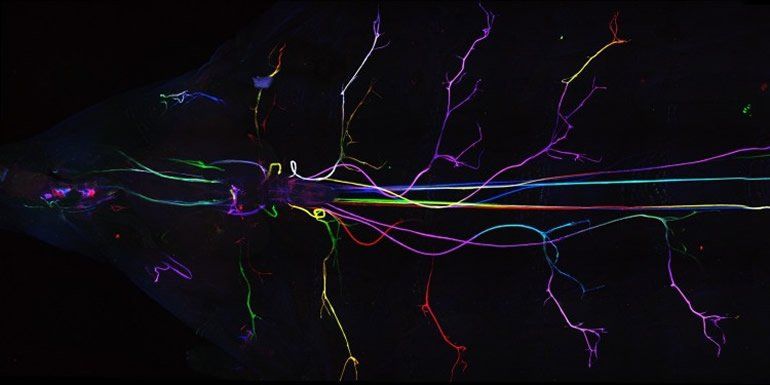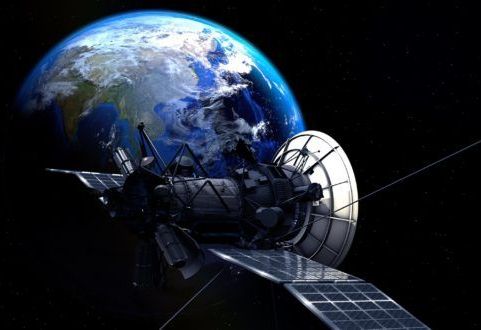#SpaceExploration
Get the latest international news and world events from around the world.
Earth has more than 1 moon!!
#SpaceExploration
Elon Musk’s Neuralink — The Dark Side
TLDR: Scroll down to Conclusions.
Elon Musk has recently unveiled his company’s first Neuralink device implanted in an experimental animal — a pig.
To briefly describe the device for those without much technical knowledge, it is an invasive technology based on the concept of a neural lace, which is a mesh of perhaps hundreds of wires laced throughout the brain albeit with concentration of connections in certain areas. These either sample neural patterns or modify them. Needless to say, even the minor technical challenges are massive. For example, it involves brain surgery. Then we have bio-compatibility problems as typically implanted electrodes tend to cause the tissues around them to die back. Finally, actually transferring massive amounts of data through the skull to and from an implanted and (presumably) powered computer. Elon Musk may well be able to solve these problems since they are not new technical challenges and a considerable amount of work has already been done in this area. Even automating the brain surgery may well be feasible using robotics.

AI Avatars — from Clippy to Rommie and Beyond
From the Merriam-Webster dictionary:
Avatar derives from a Sanskrit word meaning “descent,” and when it first appeared in English in the late 18th century, it referred to the descent of a deity to the earth — typically, the incarnation in earthly form of Vishnu or another Hindu deity. It later came to refer to any incarnation in human form, and then to any embodiment (such as that of a concept or philosophy), whether or not in the form of a person. In the age of technology, avatar has developed another sense — it can now be used for the image that a person chooses as his or her “embodiment” in an electronic medium.

Glial Cells Play an Active Role in the Nervous System
Summary: Glial cells not only control the speed of nerve conduction, but they also influence the precision of signal transduction.
Source: University of Münster
For the brain to work efficiently, it is important that a nerve impulse arrives at its destination as quickly and as precisely as possible. It has been long been known that the nerve fibres — also known as axons — pass on these impulses. In the course of evolution, an insulating sheath — myelin — developed around the axons which increases the speed of conduction. This insulating sheath is formed by the second type of cell in the nervous system — the glial cells, which are one of the main components of the brain. If, as a result of disease, myelin is depleted, this leads to neurological disorders such as Multiple Sclerosis or Morbus Charcot-Marie-Tooth.

Watching a volcano make a comeback
Scientists analyse images over seven decades.
German and Russian scientists say they have documented the life cycle of a volcano for the first time, revealing that it has a kind of “memory”.
The volcano in question is Bezymianny, an active stratovolcano on the Kamchatka peninsula in eastern Russia which suffered a collapse in its eastern sector back in 1956.
Photographs of helicopter overflights from Soviet times have now been analysed alongside more recent satellite drone data using state-of-the-art methods at the German Research Centre for Geosciences (GFZ) in Potsdam.

#SpaceWatchGL Opinion: New Space – Overview and investment Trends
Historically, human space exploration was initiated by the Soviet Union with the Sputnik launch into the Earth orbit in 1957. Humankind’s space endeavors grew with more determination after the first animal’s launch, a dog called “Laika”. Marked by the Soviet Union’s Yuri Gagarin trip in the Vostok 1 in 1961 and his compatriot Valentina Tereshkiva’s three-day space orbiting mission in the Vostok 6 in 1963, humankind succeeded to make the giant leap beyond Earth’s boundaries.
Nonetheless, the Yuri Gagarin’s spacewalk and Neil Armstrong’s first steps on the Moon remain the spark to ignite ambitious human prospects on space travel, which unleashed unlimited possibilities on the humankind’s expansion into outer space. The achieved milestones in space endeavors created a shift from a mere inspirational driver and curiosity feeder on existential questions [3] to a space race which grew from a bipolar race between the United States and the former Soviet Union to a different space race in which new actors, particularly private actors, have become essential players [4].
The most prominent ongoing transformation of the global space sector is the race to commercialize space driven by private enterprises and induced by governmental agencies who rewarded these enterprises billions of dollars in governmental space contracts. The evolution of space commercialization could be illustrated through the U.S. space economic emergence from the National Aeronautics and Space administration’s (NASA) monopoly to a more liberalized space sector. Such an emergence came as a consequence of NASA’s struggle to improve its military-based technologies to achieve cost-effective and safe space access [5] in addition to budget reductions and various costly accidents, which led NASA to outsource its spaceship manufacturing.
NASA’s outsourcing mechanisms were organized through public procurement contracts accorded through bidding mechanisms to a few private space giants. Under these procurement contracts, private entities undertook rockets and spaceships manufacturing supervised by NASA, who provided the launching facility. From 1982, private actors’ access to the space sector became less costly due to reduced entry barriers to the space sector [6].
Sparked by President Barak Obama’s policy in 2010, the space industry witnessed an unprecedented disruption characterized by decentralizing space activities from governmental entities to private sectors. As a consequence, the U.S. space sector has undergone a shift that impacted the global space sector. This shift was propelled by complex dynamics due to the interaction between various forces beyond simple market forces and driven by various factors. The combination of these factors, including the reduction of public entities’ involvement and the substantial private investment injection into the global space sector, created a diverse space sector [7]. The global space sector’s evolution created a revolutionary New Space market structure; thanks to its related complex geopolitics and complex forces, a new race started: the race to commercialize space.
#SpaceWatchGL
References
[1] Cousins, Norman, Philip Morrison, James Michener, Jacques Cousteau, Ray Bradbury, Why Man Explores, California Institute of Technology Symposium, Pasadena, July 2, 1976, California, NASA Educational Publication 123, Government Printing Office: Washington D. C., 1977.

How to see Uranus in the night sky (without a telescope) this week
Just how many planets are visible without a telescope? Not including our own planet, most people will answer “five” (Mercury, Venus, Mars, Jupiter and Saturn).
Those are the five brightest planets, but in reality, there is a sixth planet that can be glimpsed without the aid of either a telescope or binoculars.

NASA is looking for private companies to help mine the moon
NASA has announced it is looking for private companies to go to the moon and collect dust and rocks from the surface and bring them back to Earth.
The American space agency would then buy the moon samples in amounts between 50 to 500 grams for between $15,000 to $25,000.
The NASA administrator, Jim Bridenstine, announced on Thursday that the moon material collection would become part of a technology development program that would help astronauts “live off the land” for crewed missions in the future to the moon or elsewhere.

Canada reports no new deaths from coronavirus for the first time since March
Canada reported no new deaths from COVID-19 on Friday for the first time in six months. The last time the country reported no new deaths from the virus on March 15, at the start of lockdowns in North America due to the pandemic, Reuters reports.
As of Friday evening, over 6 million people had been tested for COVID-19 in Canada, 2.1% of which came back positive. Some 702 new cases were reported on Friday, but no new deaths, the Public Health Agency of Canada reported.